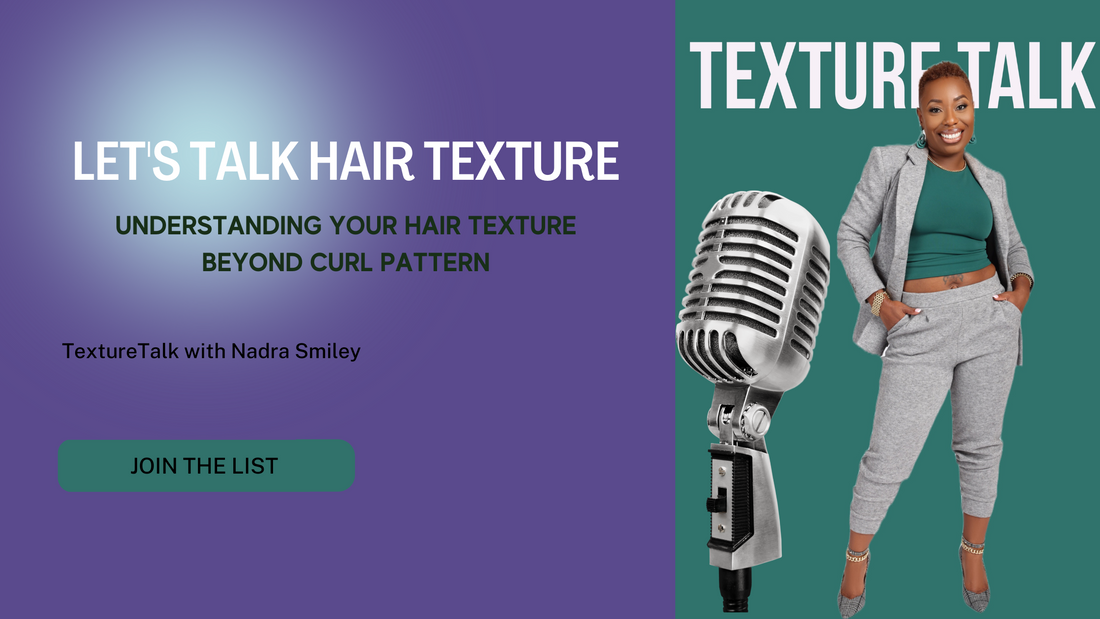Understanding Textured Hair
Why We're Simplifying The Alphabet Brigade
If you’ve been in the natural hair arena for any length of time, then you’re fairly familiar with the alphanumeric categorization system that most natural hair gurus and DIY-ers religiously reference. Not only is it an easy way to describe your hair type, it can be helpful when it comes to picking out the best products. There’s only one major issue: it’s incorrect.
This hair typing system is primarily employed to describe a curl pattern, when what its user really wants to target are their hair characteristics. For example: someone with 4a hair may describe their locs as “tightly coiled and somewhat dry” when the real problem is that their strands are denser and have lower porosity, and therefore need new products.
While we don’t want to discourage you from trying out new products, we do want you to understand the ins and outs of your hair so you know what to ask for, and can save yourself some time and money in the long run. Black and African American hair types are generally more fragile than other textures because of the adverse climate we’re in. Black hair goes through so many climate and seasonal changes that it can be hard for the hair to receive the nutrients it needs on a regular basis. If you were to look at what’s considered type 3 or 4 hair under a microscope, or even just part your hair into sections across your head, you’d find unique curl patterns that could very well fall into any of the number types.
Each subtype depends on the curl pattern, density, porosity, texture, and hair history. Yes, hair history: i.e., how much heat damage, chemical treatments, and breakage that strand or section of hair has incurred.
So the next time you waltz into your local beauty supply store, or book your hair appointment, consider sharing your hair concerns beyond 3a or 4c. You can read more about our product recommendations and descriptions for each hair profile here.
Evolving Hair Textures, Types, and Structures
Welcome to the Evolving Textures guide to understanding textured hair! Whether you're rocking natural styles, locs, twists, or braids, it's essential to know your hair's unique characteristics and how to care for it properly. In this guide, we'll explore the differences in hair textures and types, as well as provide tips on how to use and how much product to use for optimal results.
Understanding Textured Hair
By understanding your hair's unique needs and using the right products and techniques, you can embrace and celebrate your textured hair with confidence. Evolving Textures is here to support you on your journey to healthy, beautiful hair!
Black hair types refer to the different textures and curl patterns of hair commonly found in individuals with African or African-American ancestry. There are generally four main types of black hair, each with its own characteristics:
Understanding Hair Textures and Types
Textured hair encompasses a wide range of curl patterns, from loose waves to tight coils. Here's a breakdown of the main hair textures and types:
1. Type 1: Straight hair - This hair type is very rare among individuals of African descent, and is characterized by hair that is straight and lacks any natural curl or wave pattern.
2. Type 2 (Wavy): This hair type has a defined S-shaped pattern and tends to be prone to frizz. It ranges from fine to coarse.
3. Type 3 (Curly): Curly hair forms ringlets or corkscrew shapes and has more volume than wavy hair. It can range from loose curls to tight coils.
4. Type 4 (Coily): Coily hair has a tight, spiral or zigzag pattern and is the most delicate of all hair types. It ranges from fine to coarse.
It's important to note that many individuals with black hair may have a combination of these hair types on different areas of their head, and that proper hair care and maintenance can help to enhance and define their natural curl pattern.Within each hair type, there are subcategories that further define the curl pattern and texture.
Understanding your specific hair type can help you choose the right products and techniques for your hair care routine.
Any successful natural hair service should begin with a consultation and a hair analysis. Recent services must be considered in the consultation (the last color, the last relaxer, the last thermo style) because they change the hair's authenticity.
Curl patterns or wave patterns refers to the amount of movement in the hair strand. and Curl pattern can be described as straight, wavy, curly, and coily. Wave patterns are a result of genetics or racial background.
However, in a proper hair analysis, the most important factors are usually texture, porosity, elasticity, and density.
Hair texture is the thickness or diameter of the individual hair strand. It can be classified as coarse, medium, or fine. One head can have several different textures.
Hair density is the number of individual hair strands on one square inch of scalp. Hair density refers to hair being thick, medium, or thin.
Hair porosity is the ability of the hair to absorb moisture. The degree of porosity is directly related to the condition of the cuticle layer. Healthy hair with a compact cuticle layer is naturally resistant to penetration. Porous hair has a raised cuticle layer that absorbs water.
Hair elasticity is the ability of the hair to stretch and return to its original length without breaking. Hair with low elasticity is brittle and breaks easily. Hair with high elasticity is strong and grows longer.


1 comment
This is such a refreshing take on understanding textured hair! The traditional alphanumeric system can be limiting and doesn’t always reflect the unique qualities of each individual’s hair. I love how this post emphasizes the importance of considering factors like porosity, density, and hair history when selecting products. By focusing on these characteristics, we’re better equipped to address the specific needs of our hair and avoid wasting time or money on products that may not work. It’s empowering to be able to advocate for our own hair care needs with a deeper understanding of our strands! https://humanhairbraiding.hashnode.dev/effortlessly-stylish-top-hairstyles-to-flaunt-your-long-hair